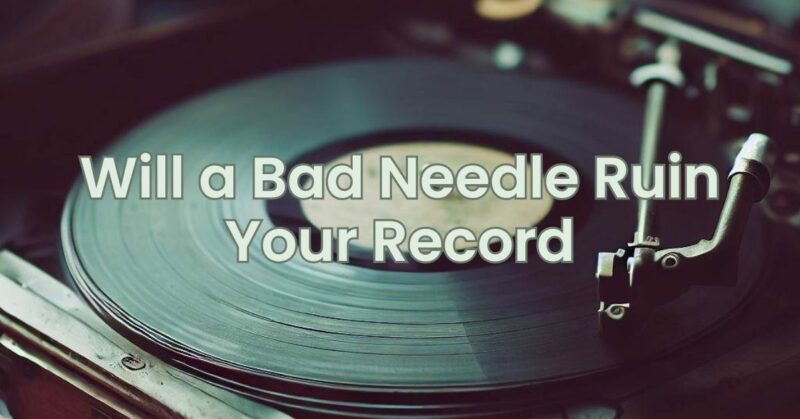Vinyl records hold a special place in the hearts of music enthusiasts, offering a unique listening experience that captures the essence of analog sound. To enjoy the best possible sound quality and preserve the condition of your records, it’s essential to maintain a properly functioning record needle, also known as a stylus. A worn-out or damaged stylus can have detrimental effects on both the sound quality and the physical condition of your cherished vinyl collection. In this article, we will explore the potential risks and consequences of using a bad needle, discuss common signs of a faulty stylus, and offer guidance on proper stylus care to protect your records.
The Impact of a Bad Needle on Sound Quality:
A bad needle can significantly compromise the sound quality of your records. Here are a few key ways a faulty stylus can affect the audio:
- Reduced High-Frequency Response: A worn or damaged needle may fail to accurately track the intricate details of high-frequency sounds, resulting in a loss of clarity, sparkle, and definition in the music.
- Increased Surface Noise: A damaged stylus can introduce additional surface noise, including pops, clicks, and background hiss, which detracts from the overall listening experience.
- Tracking Errors and Skips: A worn-out stylus may struggle to maintain proper tracking, leading to tracking errors or even skipping, causing interruptions in the playback.
- Distortion: A damaged needle can produce various types of distortion, such as sibilance (exaggerated “s” sounds), distortion in loud passages, or overall muddiness in the sound.
Physical Damage to Vinyl Records:
In addition to sound quality issues, a bad needle can potentially damage your vinyl records in the following ways:
- Groove Wear: A worn or misaligned stylus can put excessive pressure on the record grooves, resulting in accelerated groove wear. Over time, this can cause permanent damage to the record, affecting its sound quality and diminishing its value.
- Scratching and Scuffing: A damaged or misaligned stylus may scratch or scuff the record surface, leading to audible noise and visible damage that can degrade playback quality.
Signs of a Faulty Stylus:
To determine if your needle is in poor condition, watch out for the following signs:
- Audible Distortion: If you notice significant distortion, including fuzzy or muffled sound, excessive surface noise, or inconsistent frequency response, it may be a sign that your stylus is deteriorating.
- Skips and Tracking Errors: If your records start skipping or experiencing frequent tracking errors, it could indicate a worn or damaged stylus that is struggling to maintain proper contact with the record grooves.
- Visual Inspection: Carefully examine the stylus under good lighting or magnification. Look for signs of wear, such as a worn-down or chipped tip, bent cantilever, or visible debris lodged in the stylus.
Proper Stylus Care and Maintenance:
To protect your records and maintain optimal sound quality, it is essential to practice proper stylus care:
- Regular Cleaning: Keep your stylus clean by using a stylus brush or stylus cleaning solution to remove dust, debris, and residue that can affect playback and damage your records.
- Gentle Handling: Always handle the stylus with care, avoiding any unnecessary contact or pressure that could cause damage. Handle records carefully and avoid dropping them onto the turntable platter.
- Alignment and Tracking Force: Ensure your stylus is properly aligned and set to the recommended tracking force according to the manufacturer’s guidelines. Incorrect alignment and tracking force can lead to excessive wear or inadequate tracking.
- Regular Stylus Replacement: Over time, all styli wear out. It is advisable to replace the stylus periodically to maintain optimal sound quality and minimize the risk of damaging your records.
Using a bad needle or stylus can have significant consequences on both the sound quality of your vinyl records and the physical condition of the grooves. A worn-out or damaged stylus can result in reduced sound quality, increased surface noise, tracking errors, and potential damage to your cherished records. It is crucial to recognize the signs of a faulty stylus and practice proper stylus care and maintenance to protect your records and enjoy the best possible sound from your vinyl collection. Remember, investing in a high-quality stylus and regular stylus replacement will contribute to a rewarding and long-lasting vinyl listening experience.


